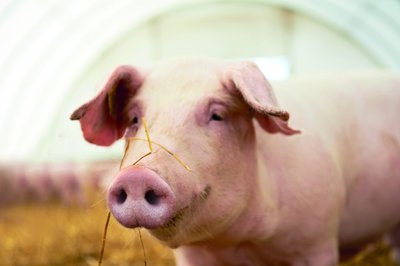Animal welfare in sows - more than just a question of space
Only healthy animals are productive - we all know that. This correlation is covered by the current political and social debate about the terms animal welfare or animal-friendly husbandry. "Animal welfare" is part of the European Green Deal and will see specific regulations in the near future. If animals are healthy, can carry out their normal behaviour and negative emotions are avoided (e.g. fear and pain), then a good animal welfare situation can be assumed.
In the case of sows, the discussion often focuses on the questions of group housing, space requirements, free farrowing or, for example, the raw fibre supply required by the German animal welfare and livestock husbandry ordinance. On closer inspection however, the options for intervention are much more diverse. From a feeding perspective, it is worth taking a closer look at the sow during pregnancy, farrowing and lactation.
A key issue in gestation is feed restriction to prevent animals from becoming obese. However, chronic hunger in group housing can lead to aggression and cause fight-related injuries. Hunger also causes stress, demonstrable, for example, by increased secretion of the stress hormone cortisol, and can also impair performance. General recommendations to improve sow satiety usually include increasing the (crude) fibre content. But here it is worth taking a closer look at fibre composition. In a recent feeding trial (Silva et al. in preparation), Topig's Norsvin TN70 sows were fed a basal ration of corn and soybean extraction meal supplemented with either soybean hulls (S; 15%) or the eubiotic lignocellulose OptiCell® + soybean hulls (OC+S; 2.5+12.5%) throughout gestation. The crude fibre contents of both experimental rations did not differ significantly with 7.5% and 8.1%, respectively.
Blood glucose levels were measured in both groups on day 35, 75 and 111 of gestation at 5 different time points, before and after feed intake respectively. Starting from the same level before feeding, the sows in the OptiCell®group showed higher levels at all further measurement time points than the sows receiving only soy hulls as a fibre source (Figure 1). A stable blood glucose level is important for reducing hunger and thus stress, in addition to mechanical satiation via distension of the gastrointestinal tract, which is achieved, for example, by swelling fibre components with high proportions of soluble fibre (such as soy hulls). The addition of OptiCell® thus showed more significant effects here than soy hulls alone. In addition, the number of piglets born in the OptiCell® group was also significantly higher at 17.8 than in the soy hulls group at 16.2. The stabilized blood glucose level and better litter performance achieved with OptiCell® clearly indicates a reduction in stress and is consistent with earlier results where OptiCell® was used to achieve a clear reduction in the stress hormone cortisol in pregnant sows.
A supplementary test in Brazil confirmed (Silva 2020, personal communication) that pregnant sows that received a 2.5% supplement to the standard ration of corn and soy showed significantly fewer hunger signals with restrictive feeding, visible through fewer unsuccessful visits to the automatic feeder, i.e., visits without feed allotment (Figure 2).
Reducing hunger in sows is a goal within animal welfare. The targeted fibre supplementation of OptiCell® in pregnant sows can - even with otherwise supposedly sufficient fibre supply - show additional effects in reducing hunger and stress, which the animals reward with a higher litter performance!


